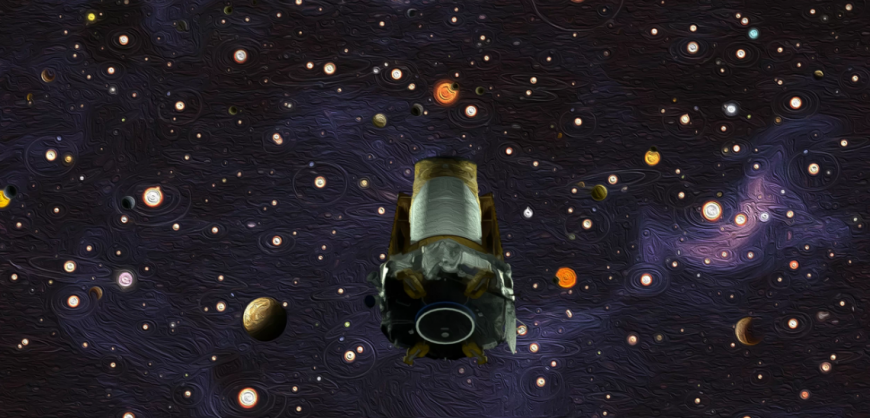The most prolific planet-hunting machine in history has signed off.
NASA’s Kepler space telescope, which has discovered 70 percent of the 3,800 confirmed alien worlds to date, has run out of fuel, agency officials announced today (Oct. 30). Kepler can no longer reorient itself to study cosmic objects or beam its data home to Earth, so the legendary instrument’s in-space work is done after nearly a decade.
And that work has been transformative.
“Kepler has taught us that planets are ubiquitous and incredibly diverse,” Kepler project scientist Jessie Dotson, who’s based at NASA’s Ames Research Center in Moffett Field, California, told Space.com. “It’s changed how we look at the night sky.”
Today’s announcement was not unexpected. Kepler has been running low on fuel for months, and mission managers put the spacecraft to sleep several times recently to extend its operational life as much as possible. But the end couldn’t be forestalled forever; Kepler’s tank finally went dry two weeks ago, mission team members said during a telecon with reporters today.
“This marks the end of spacecraft operations for Kepler, and the end of the collection of science data,” Paul Hertz, head of NASA’s Astrophysics Division, said during the telecon.
Leading the exoplanet revolution
Kepler hunted for alien worlds using the “transit method,” finding the brightness dips caused when a planet crosses its star’s face from the spacecraft’s perspective.
Those dips are tiny — so tiny, in fact, that NASA officials were originally dubious that a spacecraft could make such measurements. The driving force behind Kepler, Ames’ Bill Borucki, had four mission proposals rejected in the 1990s before finally breaking through in 2000, after he and his team demonstrated the instrument’s sensitivity at a test-bed facility on Earth. (Borucki retired in 2015.)
It still took a while for Kepler to get aloft. The spacecraft launched in March 2009, on a $600 million mission to gauge how common Earth-like planets are throughout the Milky Way galaxy.
Initially, Kepler stared continuously at a single small patch of sky, studying about 150,000 stars simultaneously. That work was incredibly productive, yielding 2,327 confirmed exoplanet discoveries to date.
Read more HERE



































